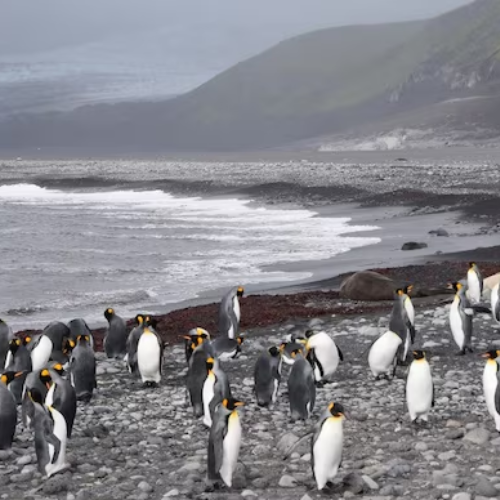In a surprising move, a group of icy, uninhabited islands located far near Antarctica has been added to a list of places hit with trade tariffs by the United States. These islands, known as Heard Island and McDonald Islands, are part of Australia but are so remote that they’re rarely visited by humans. The islands are completely barren, covered in glaciers, and home to only penguins and seals.
Despite this, they have been listed among “countries” and territories that will now face a 10% tax on goods they send to the US. This news came as part of a new list released by the White House in the latest round of trade decisions. It’s all part of a wider trade war, where countries and regions are being charged extra money (called tariffs) when they export products to America.
But there’s a twist — nobody actually lives on Heard and McDonald Islands. In fact, they’re so hard to reach that it takes a two-week boat trip from the city of Perth in Western Australia just to get there. The last time people visited the islands was nearly ten years ago. There are no houses, no shops, no factories — just snow, volcanoes, and wildlife.
China’s 54% Tariff’s EU’s 20%: Trump’s Reciprocal Tariffs Hit Hard
Still, something strange has happened. According to trade records, the US imported around US$1.4 million worth of goods from these islands in 2022. Almost all of this was listed as “machinery and electrical” products. However, there’s no known place on the islands that could produce such items, leading to confusion about how these numbers came to be. In earlier years, these exports were far smaller, sometimes only a few thousand dollars.
Even Populated Islands Surprised by Tariffs
Heard and McDonald Islands weren’t the only unusual names on the list. Several of Australia’s small external territories also appeared, all being hit with tariffs too. External territories are part of Australia, but they are separate from the mainland and usually have their own small local governments. These include places like Norfolk Island, Christmas Island, and the Cocos (Keeling) Islands.
One of the most surprising entries was Norfolk Island. This tiny island is about 1,600 kilometers from Sydney and is home to just over 2,000 people. Unlike Heard Island, Norfolk does have a local community and some small businesses. However, even here, people were baffled by the US decision.
The island was hit with a 29% tariff — nearly three times more than mainland Australia. According to trade data, Norfolk Island exported around US$655,000 worth of goods to the US in 2023. Most of this, over US$400,000, was listed as leather shoes. But even this figure is being questioned by local officials, who say they aren’t aware of any exports to the US at all.
Nike and Adidas Struggle as US Tariffs Target Vietnam Production
They claim there are no known trade activities between Norfolk Island and the United States, making the new tariffs even more confusing. Meanwhile, goods sent to the island from other countries aren’t believed to face any trade barriers either.
Shock and Confusion Across Australia
The news has caused a stir in Australia, where many are scratching their heads over why remote or tiny territories are being treated as if they’re major trading countries. The move has also drawn jokes and concern from leaders, who say that if a frozen island full of penguins can be targeted by tariffs, then no place in the world is safe from these unexpected actions.
There is no official explanation yet for why these territories were added to the tariff list. Questions have been sent to both US and Australian officials to clarify what happened, especially regarding the mysterious export figures from Heard and McDonald Islands.
So far, no clear answers have been given. But one thing is certain — when even icy, uninhabited islands are caught up in a global trade fight, the rules of trade might be getting a little too strange for comfort.


